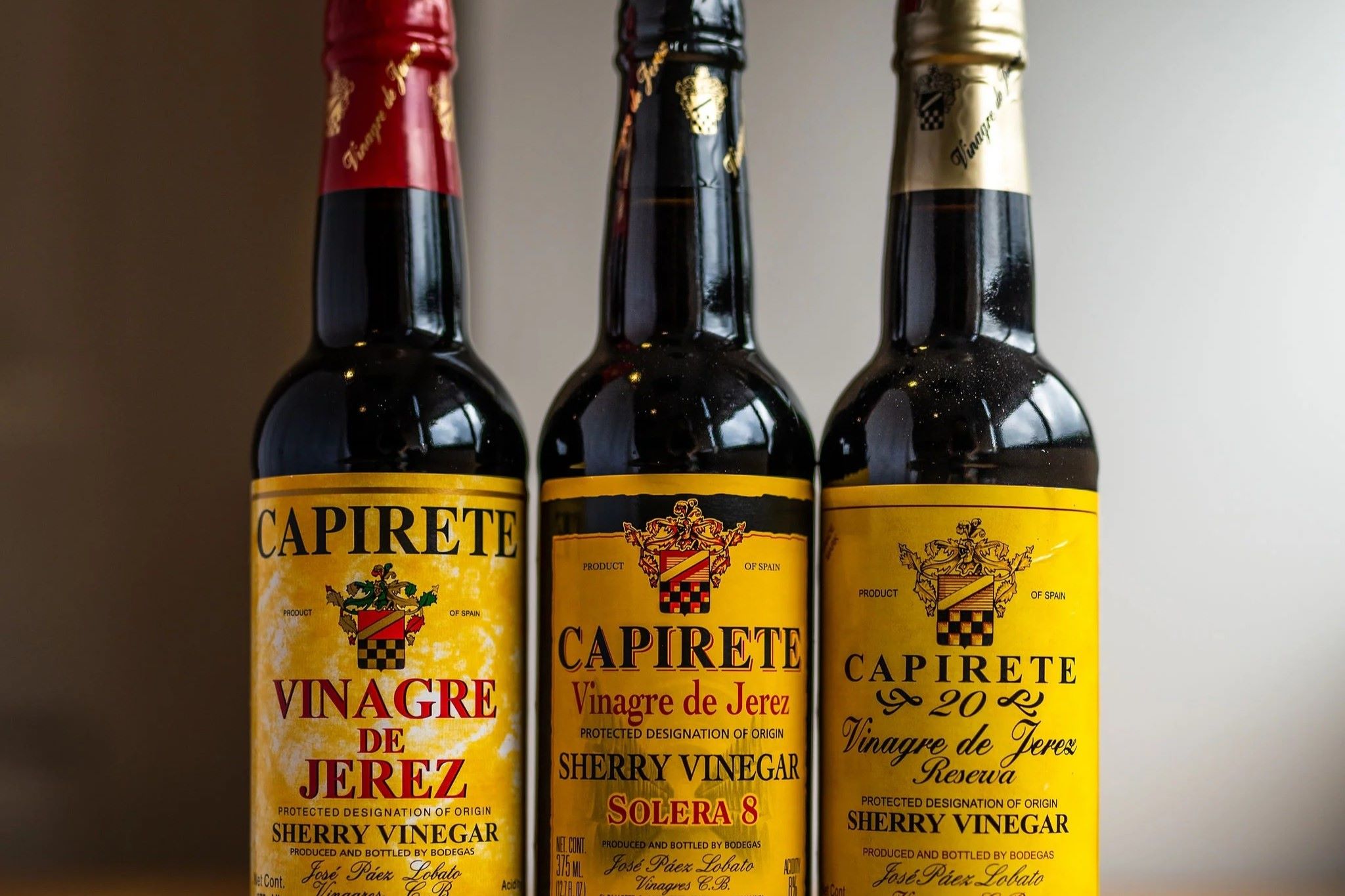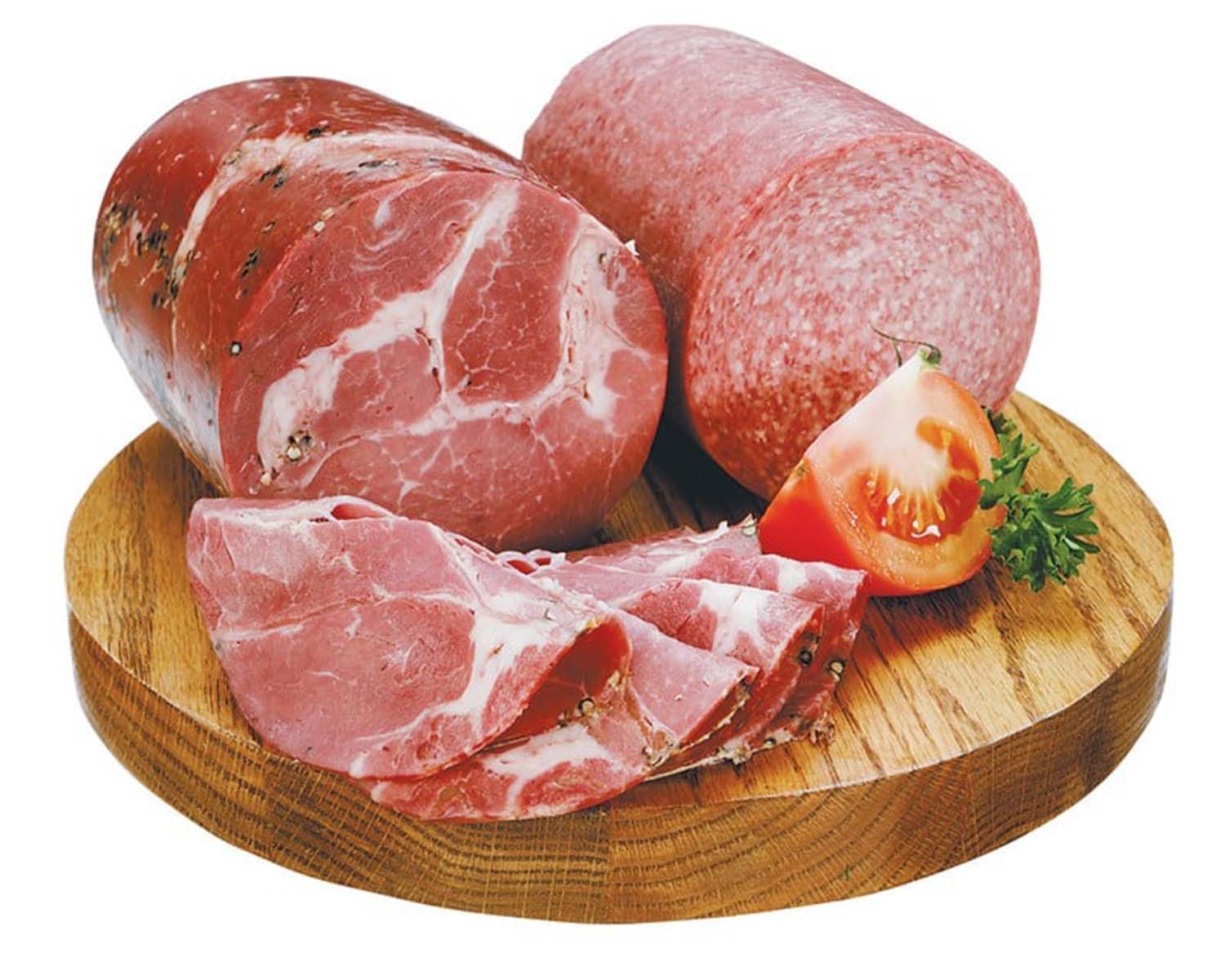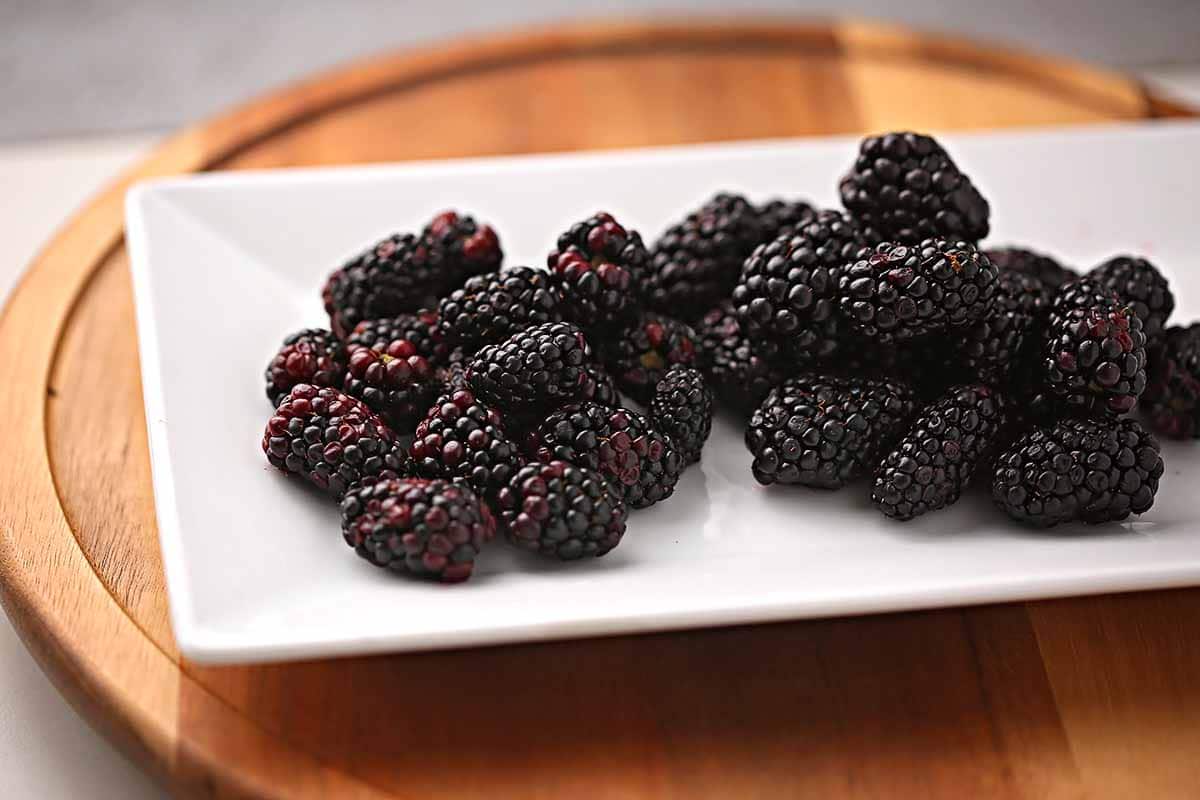Home>Food and Cooking>The Surprising Difference Between Sherry Vinegar And Sherry Wine


Food and Cooking
The Surprising Difference Between Sherry Vinegar And Sherry Wine
Modified: March 3, 2024
Discover the nuances between Sherry Vinegar and Sherry Wine with our comprehensive guide. Elevate your food and cooking with these essential ingredients.
(Many of the links in this article redirect to a specific reviewed product. Your purchase of these products through affiliate links helps to generate commission for Noodls.com, at no extra cost. Learn more)
Table of Contents
Introduction
When it comes to the world of culinary delights, the distinction between sherry vinegar and sherry wine has been a subject of curiosity and confusion for many food enthusiasts. These two products, derived from the same base ingredient, share a common origin but possess unique characteristics that set them apart. Understanding the nuanced differences between sherry vinegar and sherry wine is essential for anyone seeking to elevate their culinary expertise and appreciation for these exceptional Spanish delicacies. In this comprehensive guide, we delve into the intricate details of sherry vinegar and sherry wine, unraveling their production processes, flavor profiles, culinary uses, and health benefits. By the end of this journey, you will emerge with a newfound appreciation for these distinct yet equally remarkable creations, ready to infuse your culinary endeavors with their exceptional qualities.
What is Sherry Vinegar?
Sherry vinegar, originating from the Andalusian region of Spain, is a revered culinary gem renowned for its rich history and complex flavor profile. Crafted from sherry wine, this vinegar undergoes a meticulous aging process in oak barrels, resulting in a distinctive blend of sweet, nutty, and tangy notes. The production of authentic sherry vinegar is deeply rooted in tradition, with methods passed down through generations to preserve its unparalleled quality.
The creation of sherry vinegar begins with the careful selection of sherry wine, which serves as the foundational ingredient. This wine, derived from white grapes grown in the sun-drenched vineyards of the Jerez de la Frontera region, embodies the essence of Andalusian winemaking expertise. Through a meticulous fermentation and aging process, the sherry wine transforms into sherry vinegar, acquiring a robust and nuanced flavor profile that sets it apart from other types of vinegar.
One of the defining characteristics of sherry vinegar is its aging process, which occurs in oak barrels through a system known as the solera system. This method involves the gradual blending of different vintages of vinegar, resulting in a harmonious fusion of flavors and a remarkable depth of character. As the vinegar matures in the oak barrels, it absorbs the distinct essences of the wood, infusing it with subtle hints of vanilla, almonds, and oak, while retaining a delicate acidity that balances its overall complexity.
Sherry vinegar's versatility extends beyond its culinary applications, as it holds a revered status in the realm of gourmet cuisine. Its ability to enhance the flavors of dishes, from vibrant salads to succulent meats, has earned it a cherished place in the pantries of discerning chefs and home cooks alike. Whether used as a finishing touch to a delectable gazpacho or as a key ingredient in a tangy vinaigrette, sherry vinegar adds a layer of depth and sophistication to a wide array of culinary creations.
In essence, sherry vinegar embodies the essence of Spanish culinary tradition, offering a symphony of flavors that elevate dishes to new heights. Its rich history, meticulous production process, and unparalleled versatility make it a prized addition to any kitchen, inviting culinary enthusiasts to explore the boundless possibilities that this exceptional vinegar has to offer.
What is Sherry Wine?
Sherry wine, also known as Jerez, hails from the sun-drenched vineyards of the Andalusian region in Spain, where it is meticulously crafted to embody the essence of centuries-old winemaking traditions. This exceptional wine, made from white grapes such as Palomino, Pedro Ximénez, and Moscatel, undergoes a unique aging process that sets it apart from other varieties.
The production of sherry wine begins with the careful cultivation and harvesting of the designated grape varietals, which thrive in the limestone-rich soils of the Jerez de la Frontera region. These grapes, cultivated under the intense Andalusian sun, yield a distinct flavor profile characterized by a delicate balance of sweetness and acidity, a testament to the terroir's influence on the final product.
Once the grapes are harvested, they undergo a meticulous fermentation process, during which their natural sugars are transformed into alcohol. This initial stage of winemaking lays the foundation for the complex flavors and aromas that define sherry wine. Following fermentation, the wine is fortified with grape spirit, a process that halts fermentation and contributes to the wine's unique character.
One of the most remarkable aspects of sherry wine production is the aging process, which occurs in a dynamic system of oak barrels known as the solera system. This traditional method involves blending different vintages of wine to achieve a harmonious and consistent flavor profile. As the wine matures in the solera, it absorbs the distinct essences of the oak barrels, acquiring nuanced notes of almonds, dried fruits, and a subtle hint of salinity, which are characteristic of authentic sherry wine.
Sherry wine's diverse range of styles, from the crisp and dry Fino to the lusciously sweet Pedro Ximénez, offers a spectrum of flavors to suit various palates and culinary applications. Whether sipped on its own as an aperitif or incorporated into a myriad of culinary creations, sherry wine embodies the artistry of winemaking and the rich cultural heritage of the Andalusian region.
In essence, sherry wine stands as a testament to the time-honored traditions of Spanish winemaking, offering a sensorial journey that celebrates the unique terroir and expertise of the artisans who craft this exceptional wine.
The Production Process
Sherry vinegar and sherry wine, both originating from the Andalusian region of Spain, undergo meticulous production processes that contribute to their distinct characteristics and exceptional quality. The journey from grape to bottle is a testament to the time-honored traditions and artistry that define these revered Spanish delicacies.
Sherry Vinegar Production
The production of sherry vinegar begins with the careful selection of sherry wine, which serves as the foundational ingredient. This wine, derived from white grapes such as Palomino, is subjected to a meticulous fermentation process, during which its natural sugars are transformed into alcohol. Following fermentation, the sherry wine is then fortified with grape spirit, a crucial step that halts the fermentation process and contributes to the vinegar's unique character.
One of the defining aspects of sherry vinegar production is its aging process, which occurs in oak barrels through a system known as the solera system. This traditional method involves the gradual blending of different vintages of vinegar, resulting in a harmonious fusion of flavors and a remarkable depth of character. As the vinegar matures in the oak barrels, it undergoes a transformation, absorbing the distinct essences of the wood and acquiring nuanced notes of vanilla, almonds, and oak, while retaining a delicate acidity that balances its overall complexity.
Sherry Wine Production
The production of sherry wine begins with the careful cultivation and harvesting of designated grape varietals, including Palomino, Pedro Ximénez, and Moscatel, which thrive in the limestone-rich soils of the Jerez de la Frontera region. These grapes, nurtured under the intense Andalusian sun, yield a distinct flavor profile characterized by a delicate balance of sweetness and acidity, a testament to the terroir's influence on the final product.
Once harvested, the grapes undergo a meticulous fermentation process, during which their natural sugars are transformed into alcohol. This initial stage of winemaking lays the foundation for the complex flavors and aromas that define sherry wine. Following fermentation, the wine is fortified with grape spirit, a process that halts fermentation and contributes to the wine's unique character.
One of the most remarkable aspects of sherry wine production is the aging process, which occurs in a dynamic system of oak barrels known as the solera system. This traditional method involves blending different vintages of wine to achieve a harmonious and consistent flavor profile. As the wine matures in the solera, it absorbs the distinct essences of the oak barrels, acquiring nuanced notes of almonds, dried fruits, and a subtle hint of salinity, which are characteristic of authentic sherry wine.
In essence, the production processes of sherry vinegar and sherry wine are a testament to the meticulous craftsmanship and time-honored traditions that define these exceptional Spanish delicacies. From the careful selection of grapes to the transformative aging process, each step contributes to the rich and complex flavors that have captivated culinary enthusiasts worldwide.
Flavor Profile
Sherry vinegar boasts a complex and nuanced flavor profile that sets it apart as a prized ingredient in the culinary world. Its aging process in oak barrels imbues it with a symphony of flavors, ranging from sweet and nutty to tangy and robust. The interplay of these elements creates a versatile and vibrant vinegar that elevates a myriad of dishes with its distinctive character.
The aging process in oak barrels contributes to the development of sherry vinegar's flavor profile, infusing it with subtle hints of vanilla, almonds, and oak. These delicate notes are complemented by a balanced acidity that adds a refreshing tang to the overall taste. The result is a harmonious blend of sweet and tangy nuances, creating a multi-dimensional flavor that enhances the complexity of dishes.
In contrast, sherry wine boasts a diverse range of flavor profiles, each reflecting the unique characteristics of its respective style. From the crisp and dry Fino to the lusciously sweet Pedro Ximénez, sherry wine offers a spectrum of flavors to suit various palates and culinary applications. The influence of the solera aging process imparts distinctive notes of almonds, dried fruits, and a subtle hint of salinity, encapsulating the essence of the Andalusian terroir in each sip.
In essence, the flavor profiles of sherry vinegar and sherry wine embody the artistry and expertise of their respective production processes, offering a sensorial journey that celebrates the unique terroir and cultural heritage of the Andalusian region.
Culinary Uses
Sherry vinegar and sherry wine, with their distinct flavor profiles and exceptional depth, are prized ingredients in the culinary world, adding a layer of sophistication and complexity to a myriad of dishes. Their versatility extends beyond traditional Spanish cuisine, making them indispensable in a wide range of culinary applications.
Sherry Vinegar
Sherry vinegar, with its harmonious blend of sweet, nutty, and tangy notes, serves as a versatile and vibrant addition to countless recipes. Its nuanced flavor profile makes it a sought-after ingredient in vinaigrettes, marinades, and sauces, where it lends a delightful complexity and depth. When drizzled over fresh greens, sherry vinegar adds a refreshing tang that enlivens salads, while its subtle sweetness enhances the flavors of roasted vegetables and grilled meats. Additionally, it serves as a remarkable finishing touch for soups and stews, elevating their overall taste with its distinctive character.
Beyond dressings and marinades, sherry vinegar shines in seafood dishes, where its acidity balances the richness of fish and shellfish, imparting a delightful contrast of flavors. Its ability to cut through fatty textures makes it an ideal accompaniment to a variety of seafood creations, from ceviche to grilled octopus. Furthermore, its versatility extends to sweet applications, where it can be used to enhance the flavors of fruits and desserts, adding a nuanced acidity that complements their natural sweetness.
Sherry Wine
Sherry wine, with its diverse range of styles, offers a spectrum of flavors to enhance culinary creations. The crisp and dry Fino variety, with its delicate notes of almonds and a refreshing finish, serves as an exceptional pairing for tapas, cured meats, and savory snacks. Its versatility extends to the realm of cooking, where it can be used to deglaze pans and add depth to sauces, imparting a subtle nuttiness that elevates the overall flavor profile of dishes.
On the other hand, the lusciously sweet Pedro Ximénez variety of sherry wine lends itself to a myriad of sweet applications, enriching desserts with its decadent notes of raisins, figs, and caramel. From drizzling over vanilla ice cream to incorporating into rich chocolate confections, Pedro Ximénez sherry wine adds a luxurious depth to sweet creations, making it a cherished ingredient in the realm of pastry and confectionery.
In essence, sherry vinegar and sherry wine stand as indispensable assets in the culinary world, offering a symphony of flavors that elevate dishes to new heights. Their versatility and depth make them essential components in the repertoire of chefs and home cooks, inviting culinary enthusiasts to explore the boundless possibilities that these exceptional Spanish delicacies have to offer.
Health Benefits
Sherry vinegar and sherry wine not only delight the palate but also offer a range of potential health benefits, adding an extra dimension to their allure. These exceptional Spanish delicacies, derived from meticulous production processes and time-honored traditions, possess qualities that may contribute to overall well-being when consumed in moderation.
Sherry Vinegar
Sherry vinegar, with its rich and complex flavor profile, contains acetic acid, a compound that has been associated with various potential health benefits. Acetic acid is known for its antimicrobial properties, which may help inhibit the growth of harmful bacteria in the digestive system. Additionally, consuming foods or dressings containing sherry vinegar may aid in promoting digestive health and supporting the body's natural detoxification processes.
Furthermore, the aging process of sherry vinegar in oak barrels may contribute to the presence of antioxidants, which play a vital role in combating oxidative stress and reducing inflammation in the body. These antioxidants, such as polyphenols, are revered for their potential to protect cells from damage caused by free radicals, thereby promoting overall health and well-being.
Sherry Wine
Sherry wine, known for its diverse range of styles, offers potential health benefits attributed to its unique composition and aging process. The presence of resveratrol, a natural compound found in the skins of grapes, particularly red varieties, has garnered attention for its potential cardiovascular benefits. Resveratrol is believed to promote heart health by supporting healthy blood circulation and contributing to the maintenance of optimal cholesterol levels.
Moreover, the moderate consumption of sherry wine, particularly varieties such as Fino and Manzanilla, which undergo a biological aging process under a layer of yeast known as flor, may offer probiotic benefits. The presence of beneficial microorganisms in these styles of sherry wine has been linked to potential improvements in gut health and the maintenance of a healthy microbiome.
In essence, while savoring the unique flavors of sherry vinegar and sherry wine, it is worth noting that their consumption in moderation may offer potential health benefits. From supporting digestive health to providing antioxidant protection, these exceptional Spanish delicacies contribute to a holistic approach to well-being, adding an enriching dimension to their culinary significance.
Conclusion
In conclusion, the world of culinary excellence is enriched by the exceptional qualities of sherry vinegar and sherry wine, each embodying the artistry, tradition, and cultural heritage of the Andalusian region of Spain. The nuanced differences between these two extraordinary products, derived from the same base ingredient, are a testament to the intricate craftsmanship and time-honored traditions that define their production processes.
Sherry vinegar, with its complex and vibrant flavor profile, elevates dishes with its harmonious blend of sweet, nutty, and tangy notes. Its versatility in culinary applications, from vinaigrettes to seafood dishes, reflects the depth of its character and its ability to enhance a wide array of culinary creations. The meticulous aging process in oak barrels imbues it with a symphony of flavors, contributing to its revered status in the realm of gourmet cuisine.
On the other hand, sherry wine, with its diverse range of styles and unique aging process in the solera system, offers a sensorial journey that celebrates the terroir and expertise of the artisans who craft this exceptional wine. From the crisp and dry Fino to the lusciously sweet Pedro Ximénez, each style encapsulates the essence of Andalusian winemaking, offering a spectrum of flavors to suit various palates and culinary applications.
Furthermore, the potential health benefits associated with the consumption of sherry vinegar and sherry wine add an enriching dimension to their allure, contributing to a holistic approach to well-being when enjoyed in moderation. From promoting digestive health to providing antioxidant protection, these exceptional Spanish delicacies offer a symphony of flavors that extend beyond the palate, enriching the overall culinary experience.
In essence, the surprising difference between sherry vinegar and sherry wine lies not only in their distinct flavor profiles and culinary uses but also in the rich history, meticulous production processes, and potential health benefits that define them. As culinary enthusiasts continue to explore the boundless possibilities that these exceptional Spanish delicacies have to offer, they embark on a journey steeped in tradition, artistry, and the vibrant flavors of the Andalusian region.












